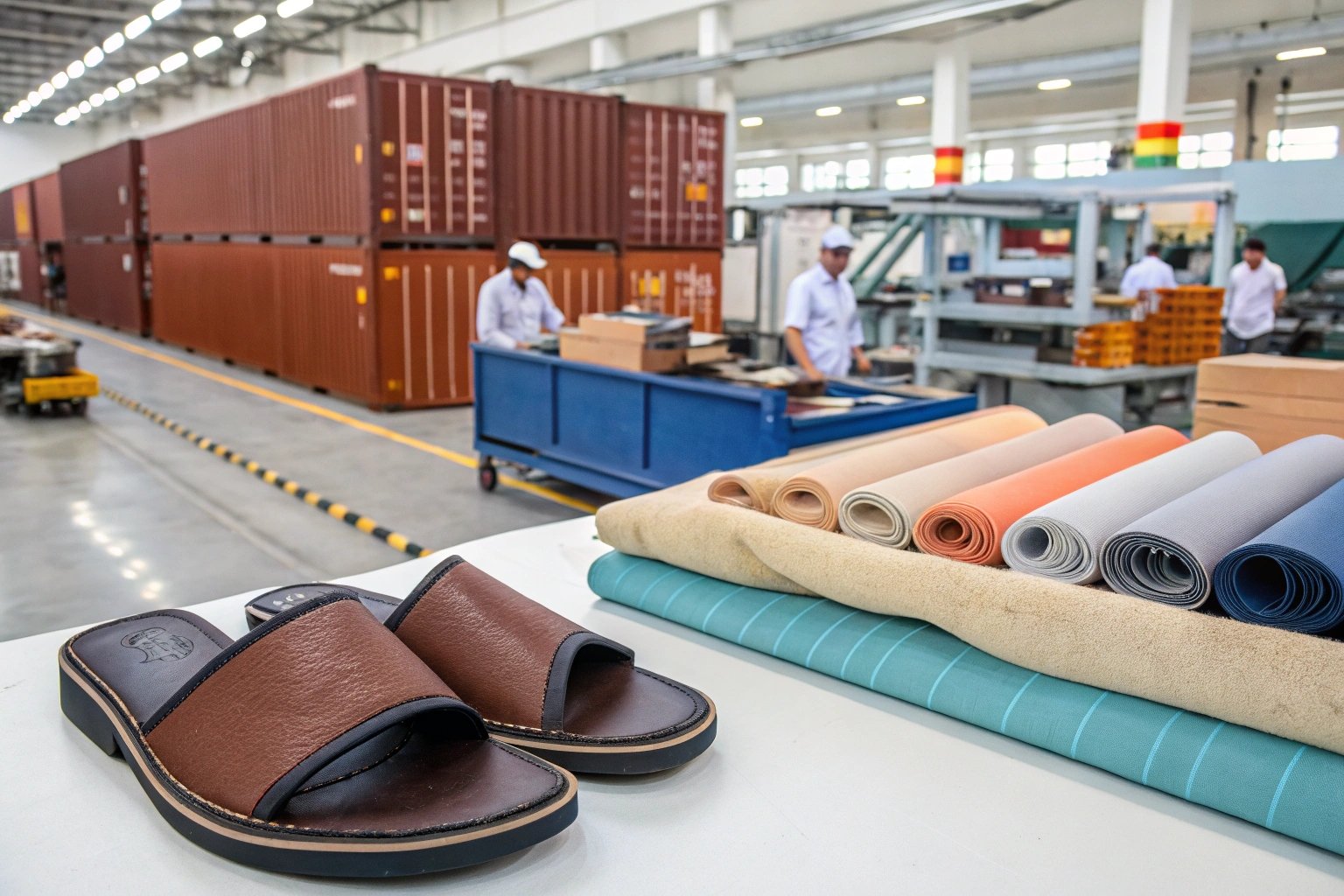Are you wondering why some slippers cost $10 and others cost $100? It all comes down to the materials used.
The material of slippers greatly influences the final selling price. High-quality, durable, or specialty materials will increase the cost. Cheaper, readily available materials will keep the price lower.

So, let’s dive deeper and find out more.
What are the most expensive slipper materials and why?
Are you curious about which slipper materials will significantly impact the price? It’s all about the luxury and durability of the materials.
Expensive slipper materials include genuine leather, shearling, and high-end faux fur. Their luxurious feel, durability, and higher production costs lead to a higher selling price.

Let’s explore why these materials command such high prices.
| Material | Characteristics | Price Impact |
|---|---|---|
| Genuine Leather | Durable, breathable, and molds to the foot over time. Requires skilled craftsmanship and high-quality hides. | Significantly increases the price due to material cost and labor intensity. |
| Shearling | Natural wool lining that provides exceptional warmth and comfort. Sourced from sheep and requires careful processing. | High price due to the limited availability and specialized processing needs. |
| High-End Faux Fur | Mimics the look and feel of real fur, but is often made from advanced synthetic fibers. Offers warmth and a luxurious feel without the ethical concerns of real fur. | Increases price, but less so than real fur, depending on the quality. |
I remember one time when a client insisted on using genuine leather for their slippers. They wanted a high-end product that would last for years. The sourcing and cutting processes were much more complex, and it added a considerable amount to the final cost. However, the customer feedback was amazing, and they said that the quality justified the price. As a manufacturer, it’s our job to balance the luxury and cost to meet our clients’ expectations.
What are the most affordable slipper materials and why?
Want to create slippers that are budget-friendly? Choosing the right materials is key.
Affordable slipper materials include EVA plastic, cotton, and basic synthetic fabrics. These materials are readily available, easy to work with, and keep production costs down.

Let’s break down why these materials are so cost-effective.
| Material | Characteristics | Price Impact |
|---|---|---|
| EVA Plastic | Lightweight, waterproof, and easy to mold. Ideal for basic slippers. | Keeps the price low due to its low material cost and efficient manufacturing. |
| Cotton | Breathable, soft, and widely available. A good choice for simple, comfortable slippers. | Moderate price, but can be very competitive when sourced in bulk. |
| Basic Synthetics | Polyester and acrylic fabrics offer durability and are easy to dye. A versatile option for various slipper styles. | Very affordable and widely available, making it a budget-friendly choice. |
When I first started in this business, my father always told me, "Never underestimate the power of simple materials." We once had a promotional company that wanted to create slippers for a campaign. They needed something cheap, cheerful, and easy to produce in large quantities. We ended up using EVA plastic. We printed the logo, images and various labels/packages on our existing portfolio and the slippers turned out to be a huge hit. Sometimes, the simplest solutions are the best.
How does material sourcing and manufacturing impact slipper prices?
Do you understand how the process of getting materials and making slippers affects the final price? It’s a complex dance of supply and demand.
Sourcing materials from distant suppliers or using complex manufacturing processes can raise slipper prices. Conversely, local sourcing and streamlined production can help keep costs down.

The following factors influence the final price:
| Factor | Impact on Price | Example |
|---|---|---|
| Material Origin | Sourcing materials from far away increases transportation costs and lead times. | Importing shearling from New Zealand adds to the price compared to using locally sourced materials. |
| Manufacturing Location | Labor costs vary greatly between countries. Manufacturing in China is often more affordable than in the USA. | Manufacturing EVA plastic slippers in China is cheaper because of lower labor costs. |
| Production Volume | Larger orders allow for economies of scale, reducing the per-unit cost. | Producing 10,000 pairs of cotton slippers is cheaper per pair than producing 200 pieces. |
| Customization | Adding custom logos, embroidery, or special packaging increases production time and costs. | Custom embroidery designs add to the cost compared to standard designs. |
| Certifications | Meeting certifications like CE, RoHS, REACH, and EN ISO 13287 requires additional testing and documentation, adding to the overall cost. | Obtaining REACH certification for a material increases the final price. |
I’ve learned firsthand that good supply chain management is crucial. We once had a client who wanted a specific type of faux fur that was only available from a supplier in Europe. The shipping costs and import duties were insane. After some discussion, we found a similar material from a local supplier. We got similar good quality and cut the costs. It’s all about finding the best balance between quality, availability, and price.
Conclusion
Ultimately, the material dictates the price of slippers. Balancing quality, cost, and customer needs is key to success.

